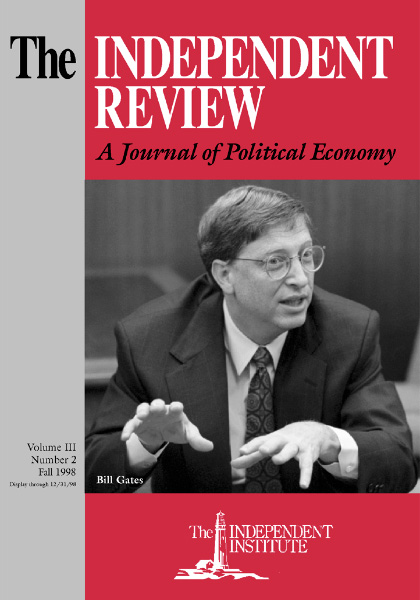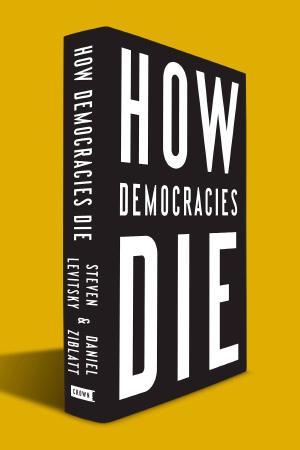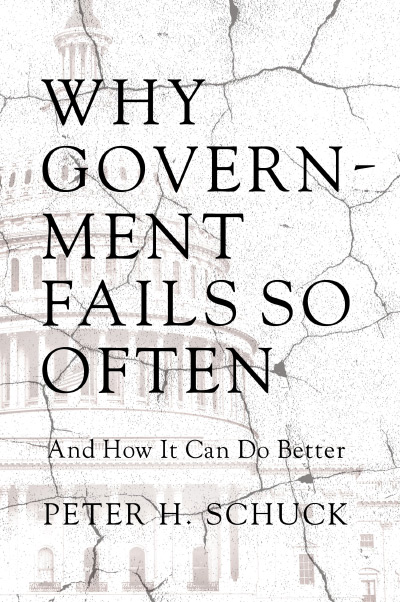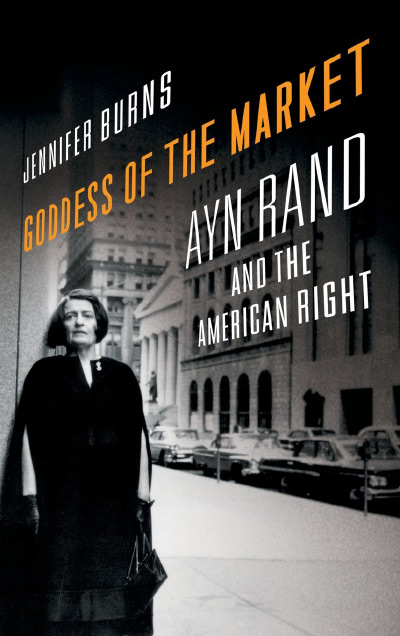Dr. Strangelove’s America tries to show that the invention of the atomic bomb had revolutionary political and cultural effects on American society. That thesis is not, in certain respects, a very demanding one. A number of the bomb’s political repercussions are obvious enough. Its existence—in particular, its eventual possession by both the Soviet Union and the United States—was an important ingredient in the black magic that transformed America’s traditional isolationism into its current global interventionism. While America extended its “nuclear umbrella” to countries all over the world, a corresponding effort to maintain domestic “security” increased the power and prestige of the state’s control agencies.
Margot A. Henriksen finds it easy to argue along these lines. But the “cultural” effects of the bomb are somewhat harder to specify. She tries to capture them by positing the existence of two “cultures” in post–World War II America: a “culture of consensus” and a “culture of dissent.” The first supported the government’s policy of stability and security; the second persistently raised questions about “the corruption inherent in atomic power” and the “repressive” nature of “mainstream American society.” Henriksen explains the postwar evolution of the American mentality as a protracted and pervasive contest between the two cultures, one of them insisting that America was and ought to be a “society of law and order,” the other representing America as “a society of evil and chaos” (pp. xxii, 7, 409, 61).
The final result of this contest, Henriksen maintains, was the victory of dissent in the “cultural revolution that crystallized” in the 1960s (p. 309). And that, in her view, was a mighty good thing: “From the cultural chaos of the 1960s emerged the reshaped values and the revised patterns of cultural response that limited the potential of America’s system of atomic arrogance” (p. 343).
It is conceivable, of course, that our New Age of atomic lethargy owes more to the collapse of the Soviet Union (something Henriksen never discusses) than to the New Thought of the 1960s (something she discusses at enormous length). This possibility does not interest Henriksen. She restricts her study to the aborted career of American “repression” and “arrogance.” It is a significant topic, but there are limits to what you can say about it if you restrict yourself to absolute terms. You can keep on saying that American society was arrogant, corrupt, and repressive; but so, in its way, is every other society. Just how bad was America in the 1950s?
Some comparison with other times and places is in order. Henriksen, however, merely nods in that direction. Her clearest contrast is between the Cold War political regime and “the humanist and innovative liberalism of New Deal Democrats.” That kind of liberalism, she says, “became suspect in this harder cold war America” (p. 75). But inasmuch as “humanist” (humanitarian?) followers of FDR were the most effective opponents of isolationism and among the most distinguished architects of Cold War policy, the contrast is not very useful.
It does not occur to Henriksen that atomic-age America was hardly the first society to be threatened with total annihilation. Such threats have been common at all ages of history. In many parts of the ancient world, they were routine: if your enemies got the upper hand, there was an excellent chance that they would completely destroy your city, massacring the adult males and enslaving everybody else. In later ages, religious conflicts became wars of extermination. The wars, revolutions, and totalitarian repressions of the first half of the twentieth century were normally, and often rightly, regarded as threats to the survival of whole societies. If Henriksen were more interested in cultural comparisons, she might be able to say something intellectually provocative about America’s distinctive way of responding to threatened annihilation by developing its two competing “cultures”—supposing that those are what it did develop.
Those two entities, however, are at best theoretical constructs. Neither has any institutional, social, or ideological unity; and one is simply the antagonist and shadow of the other. The culture of consensus appears to consist of everything associated with “mainstream” America and everyone who affirmed its essential goodness. The culture of dissent appears to include every expression of dismay or doubt, every manifestation of nonconformity, every attempt to startle or arouse. On one side, we have Harry Truman and Leave It to Beaver; on the other, Malcolm X, Elvis Presley, and Alfred Hitchcock’s The Birds. This approach is an exercise in dramatic economy. Henriksen’s play requires only two actors, each of whom can don any number of costumes.
Simple dualities are often helpful, and sometimes necessary, to the cultural historian. But this pair of opposites has entirely too much to do. It is supposed to make us understand how millions of individual members of a richly diverse society reacted to an enormous range of military, political, economic, moral, religious, artistic, and psychological problems. That is quite a challenge.
Henriksen, a historian, meets it in a largely literary way. Having created the drama of opposite cultures, she expounds its meaning by applying the methods of my own guild, the literary interpreters and critics. Not that she is concerned with judgments of cultural quality; she takes teenage science fiction films as seriously as the high drama of the Cuban missile crisis or the high farce of Stanley Kubrick’s Dr. Strangelove. Yet she does find use for the critic’s traditional rule: if something doesn’t seem to fit, just read it as a metaphor.
The James Cagney film White Heat (1949) is a melodrama about an insane gangster who aspires to locate himself at “the top of the world.” This seems pretty remote from Henriksen’s subject. But why not see the film as symbolic of “atomic age America’s dreams of power” (p. 21)? Billy Wilder’s Sunset Boulevard (1950) is a psychological study of a faded movie star. Metaphor again! The fate of Norma Desmond reveals “the evaporation of the American dream and the American order that the bomb had presumably secured” (pp. xxiv–xxv). Mister Ed (1961–65) is a television show about a man who owns a talking horse. Here we have a particularly intricate web of symbols and suggestions. On the one hand, Ed’s “unconventional family” represents the “dehumanization” of America in the atom-age regime. On the other hand, it is one of those fantasies that gave the early 1960s a refreshing glimpse of “nonconformity and diversity.” Mister Ed and similar programs “indicated that [thank God!] there was no consensus in America in the 1960s” (pp. 295–97).
Henriksen replaces Our Friend the Atom with Our Friend the Metaphor. But there is another literary way to make things fit and make things seem important. Critics and interpreters use it to great effect, and so can anyone else who has an argument that needs a bit of lard. I refer to the provision of idle but stupefying generalities:
By the mid-1950s the culture of dissent had documented the extensive psychological disturbance and community disintegration that characterized life in this age. In these same years the culture demonstrated how America’s children also became victims of the era’s insanity and hysteria. Madness crossed generational lines, and portraits of disturbed and violent children revealed an awareness of the spreading moral and psychological corruption of a society that offered little protection or sanctuary for its young. (p. 151)
Looking into the deadened and dehumanized stares of their elders, the eyes of the young brimmed with emotion—love, hate, despair, even pain. Young Americans reaching adolescence and young adulthood by the later 1950s fought for their humanity; their fight often lacked coherence and consistency, but from this creative disunity came an enlivening challenge to the sterile cold war values that had drained that elder America of its spiritual and mental health. (p. 157)
Generalities are most likely to stupefy when they are (a) moralistic and (b) clichéd. A cliché can always find some fact to stick to. That is why clichés notoriously come in opposite pairs: “haste makes waste,” but “strike while the iron is hot.” Competing clichés can mimic the ironies of deep cultural conflicts. Thus, “Through the late 1940s and 1950s Americans settled comfortably into their lives of prosperity and normalcy” (p. 88); yet, “Alienation, loneliness, and nervous disillusion seemed the norm in anxious America. Panic and paranoia often appeared warranted in this psychologically damaged America, an appropriate reaction to an unsafe world that tried to avoid recognizing its insecurity” (p. 111).
Henriksen’s literary methods would work with virtually any argument. She could use them just as credibly to vindicate the culture of consensus as she does to aggrandize the culture of dissent. She could argue that despite the ravings of paranoid dissenters, mainstream Americans actually did enjoy comfort, prosperity, and perfect mental health. She could show that Mister Ed, who was always whinnying pithy truisms, brilliantly represents the old-fashioned horse sense on which America has always based her hardy moral values. If it doesn’t matter that Mister Ed (as well as a hundred other “cultural” phenomena about which Henriksen solemnly cogitates) is a successful attempt to entertain a mass audience by transcending all unnecessary complexities of meaning, then anyone who knows enough clichés can easily turn its banality to the advantage of any argument you’d like to see.
But Henriksen has no intention of letting just any argument emerge. Like many other laborers in the “cultural studies” field, she suppresses any impulse to shock the politically correct people in her audience, people who are, after all, considerably more innocent than the viewers of Mister Ed. True, she lets the occasional chip fall where it may. She concedes, with perfect accuracy, that the Soviet Union was aggressive and “totalitarian” and that the United States “had legitimate security concerns,” even though “its pursuit of internal security and atomic secrecy went beyond the bounds of reason, creating an atmosphere of suspicion” (pp. 16, 44). But along with these doses of reality she administers enough political sedatives to relax even the crankiest anti-anticommunist.
She scorns America’s pursuit of atomic “invincibility,” as if the proper goal were vincibility (pp. 40, 43). She describes President Reagan’s comment about the “evil empire” as a “reinvigoration of the cold war,” not as a politician’s rare blunder into truth and fact (p. xix). Doing her best to sanitize the New Left, she quotes somebody who argues (with “moderation”) that its “radicalism consisted . . . in the attempt to understand the interconnection of such diverse issues as the danger of nuclear annihilation, the war in Southeast Asia, and racial injustice” (p. 433). Strange: my memory of SDS meetings has more to do with crackpot plans for “revolution.”
Then there’s the question of Julius and Ethel Rosenberg, the “atom spies” of the early fifties. Henriksen overlooks a stack of evidence as high as the pyramids of Giza and calls the case “controversial.” It became, as she says, “all things to all people”: in brief, “conservatives” thought the Rosenbergs were guilty, but “liberals” thought they weren’t. (Never mind liberals like Leslie Fiedler, who described the Rosenbergs as pathetic examples of self-righteous mendacity.) Besides, Jean-Paul Sartre, that world-renowned authority on the American political and judicial system, said that the Rosenbergs were victims of “a legal lynching.” So there. “Regardless of their guilt or innocence, the Rosenbergs did seem to bear the brunt of America’s atomic paranoia” (p. 48). It’s hard to argue with a meaningless statement, and Henriksen’s book is well stocked with them.
Deprived of its logically impoverished arguments, its lead-footed marches around the evidence, its deadening repetitions, its portentous clichés, its merciless summaries of fourth-rate works of art, and its tributes to such world-historical happenings as Woodstock, James Dean, John Lennon’s “Imagine,” and Barry McGuire’s “Eve of Destruction” (the only political song that manages to be dumber than “Imagine”), Henriksen’s book would be a great deal shorter than its current 475 pages. The obvious advice would have been to remove all the aforementioned stuff and replace it with material that even politically sympathetic readers should expect to see: a careful analysis of the way in which popular culture is produced and consumed, a really critical review of the assumptions and evidence behind both left- and right-wing political ideas, and a thorough investigation of the variety of means by which “cultures” are influenced by the modern state, with special attention to little matters like taxation and conscription.
An author deserves to be told such things before her book is printed. But perhaps advice of that kind is no longer considered necessary. Perhaps it is assumed that in an academic culture of consensus, any book so full of pious sentiments as Dr. Strangelove’s America will be received by everyone as an authoritative work of history. In that case, the major reason to remark its flaws is to prove the assumption false.
| Other Independent Review articles by Stephen Cox | |
| Winter 2000/01 | Reflections on a Ravaged Century |
| Spring 1996 | The Vision of the Anointed: Self-Congratulation as a Basis for Social Policy |


















